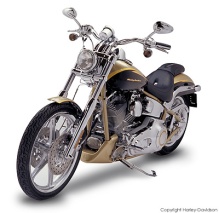Typical Technical Properties of Lubricants
ASTM: (American Society for Testing and Materials), founded in 1898, is a scientific and technical organization formed for the development of standards on characteristics and performance of materials and services. ASTM is the world's largest source of voluntary consensus standards. ASTM operates through a system of committees and subcommittees. Its committees function in prescribed field under regulations that ensure balanced representation among producers, users, general interest and consumer participants. ASTM standards govern the majority of testing performed on motor oils in North America.
Test Number & Name: ASTM D-445 Standard Test Method for Kinematic Viscosity of Transparent
and Opaque Liquids.
Significance & Use: The proper operation of equipment depends on the proper kinematic viscosity
at operating temperature of the oil used for its lubrication.
What it means: Kinematic viscosity is a measure of a liquid's flow under the influence of
gravity. It's handy to think of lubricant's kinematic viscosity as it's "I.D. card." AMSOIL formulates its
synthetic lubricants to tighter viscosity limits than other manufacturers do, so AMSOIL synthetic lubricants'
kinematic viscosity's are midrange, close to neither the high or low limit. That helps components work their best
and helps the lubricants stay in grade.
Viscosity Index
Test Number & Name: ASTM D-2270 Standard Practice for Calculating Viscosity Index from
Kinematic Viscosity at 40°C and 100°C.
Significance & Use: Viscosity index indicates how much a lubricant's viscosity will change
according to changes in temperature between 40°C (104°F) and 100°C (212°F), which roughly
define the normal temperature range of most operations.
What it means: The smaller a lubricant's viscosity change as a result of temperature change, the
higher that lubricant's viscosity index. High viscosity index lubricants, such as AMSOIL products, protect better
in operations with temperature variations.
 Cold Crank Simulator Apparent Viscosity
Cold Crank Simulator Apparent Viscosity
Test Number & Name: ASTM D-2602 Standard Test Method for Apparent Viscosity of Engine Oils at
Low Temperature Using the Cold-Cranking Simulator.
Significance & Use: Apparent viscosity has been established as a valid predictor of engine-cranking
viscosities at specified low temperatures. Apparent viscosity depends on temperature and shear rate.
What it means: Cold cranking viscosity affects the startability of engines and other equipment in
cold temperatures. Low cold cranking viscosities, such as those AMSOIL synthetic lubricants, make for easier cold
cranking and more dependable cold temperature starting.
Borderline Pumping Temperature
Test Number & Name: ASTM D-3829 Standard Test Method for Predicting the Borderline Pumping
Temperature of Engine Oil.
Significance & Use: Borderline pumping temperature is a measure of the lowest temperature at which an
engine oil can be continuously and adequately supplied to the components of an automotive engine.
What it means: The lower the borderline pumping temperature, the lower the temperature in which
the engine is protected by circulating oil. AMSOIL synthetic motor oil's extremely low borderline pumping
temperatures assure excellent low temperature protection.
 Pour Point
Pour Point
Test Number & Name: ASTM D-97 Standard Test Method for Pour Point of Petroleum Oils.
Significance & Use: The test determines the lowest temperature at which an oil flows as the jar
is tilted for a prescribed period. The pour point of an oil indicates the lowest temperature at which an oil may
be used in some applications.
What it means: the lower the pour point, the more useful the lubricant is in cold temperatures.
AMSOIL synthetic lubricants offer exceptionally low pour points.
Test Number & Name: ASTM D-92 Standard Test Method for Flash and Fire Points by Cleveland
Open Cup.
Significance & Use: Flash point is the lowest temperature at which application of a flame causes
specimen vapors to ignite. Flash point is used to asses the overall hazard of a material and is used in shipping
and safety regulations to define "flammable" and "combustible" materials.
Fire point is the lowest temperature at which a specimen sustains burning for five seconds.
What it means: Lubricants with high flash and fire points, such as AMSOIL synthetic lubricants,
are safer to use and transport than lubricants with lower ones and have a greater high temperature operating ranges.
Test Number & Name: ASTM D-5800 Determining the Evaporation Loss of Lubricating Oils (Noack's Method)
Significance & Use: Test determines the evaporation loss of lubricating oils at high temperature.
Evaporation loss is particularly important to motor and cylinder lubrication, due to the high temperature of these
operations and the tendency of evaporative loss to increase in high temperatures. Significant evaporative loss of oil
leads to excessive oil consumption and destructive changes in oil properties.
What it means: Lubricants with low Noack scores, such as AMSOIL synthetic lubricants, lose less
to volatility than lubricants with high scores. Low-loss oils keep their original protective and performance
qualities longer than high-loss oils do, which keeps oil consumption low and fuel economy and equipment protection
high.
 High Temperature/High Shear Viscosity
High Temperature/High Shear Viscosity
Test Number & Name: ASTM D-4683 Standard Test Method for Measuring Viscosity at High Temperature and High
Shear Rate by Tapered Bearing Simulator.
Significance & Use: Viscosity at the shear rate and temperature of this test is considered
representative of the condition encountered in the bearings of automotive engines in sever service. Lubricant
viscosity in the bearings of automotive engines in severe service is a critical factor in bearing wear.
What it means: Lubricants with high scores, such as AMSOIL synthetic lubricants, maintain their
viscosity in high temperatures after exposure to high shear. That means they continue to protect engine bearing
even after exposure to sever service conditions.
Test Number & Name: ASTM D-4172B Standard Test Method for Wear Preventive Characteristics of
Lubricating Fluid (Four-Ball Method).
Significance & Use: Test method determines the relative wear preventive properties of lubricants
in sliding contact under the test conditions. Lubricant comparisons are made by comparing the average wear scars
on three fixed balls made by one ball in rotating contact with them in baths of the test lubricants.
What it means: The smaller the average wear scar, the better the protection. AMSOIL synthetic
lubricants deliver much smaller wear scars - and much better protection - than other lubricants do. The Four Ball
Wear Test may be conducted at various levels of severity. Independent laboratory testing shows that AMSOIL Series
2000 and Series 3000 motor oils' wear scars are significantly smaller than those of popular competitor oils in
extremely severe test conditions, making these oils ideal for extreme service engine operations.
We're now on Facebook!

Buy at wholesale price!
Preferred Customers buy at dealer cost and save 25%!

Not sure which products to get for your vehicle? Use the Vehicle Lookup Guide.

AMSOIL Distributor Opportunities
Start your own home business based on a proven superior product. Very low startup costs.

Sell AMSOIL products in your shop or store. Click here for information on AMSOIL retail accounts.

Does your business purchase lubricants for its equipment? Click for information about AMSOIL commercial accounts! Extend your equipment's life and reduce costs!




